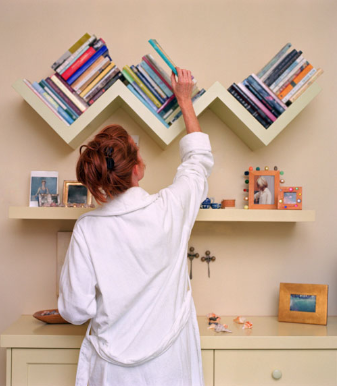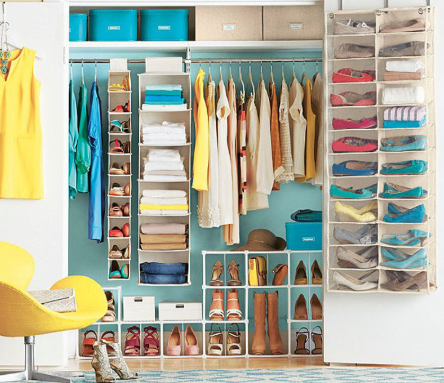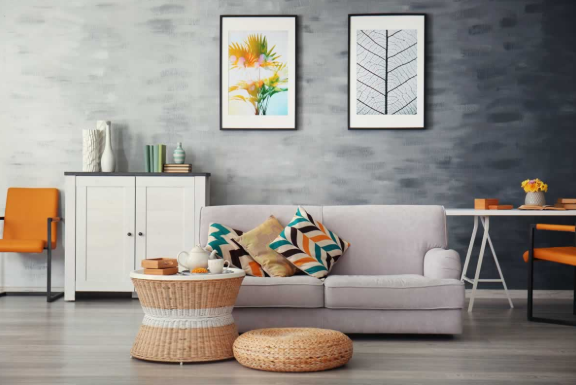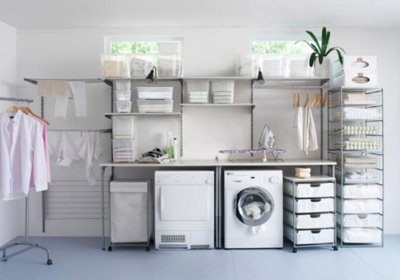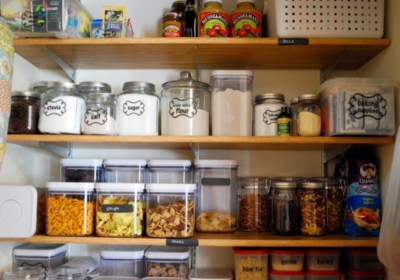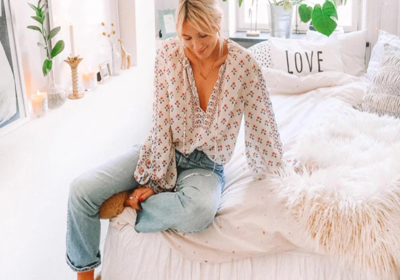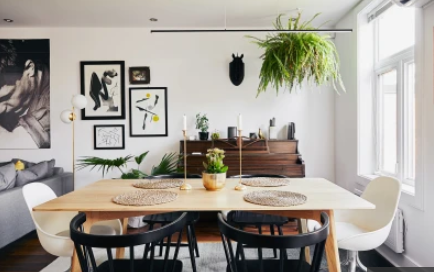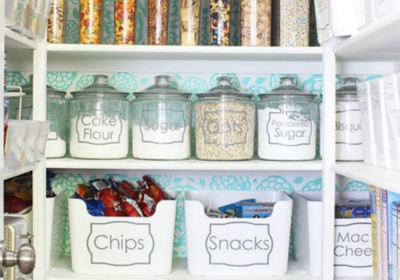Organizing Tips and Tricks
Every little things matter when it comes to organizing your home. It is pretty obvious that aside from decluttering one must also learn how to organize effectively.
I, myself finds it difficult at some point to find time to clean and organize stuff, obviously it requires time and effort.
Get your home whipped into tip-top shape with Home Organizing Tips and Tricks!
The benefits of getting organized are endless: There’s less housework. Goals become clearer. There’s more space for things you love. You may even sleep better.
It’s time to get your home organized!
You’ll LOVE these simple tips and tricks to organize every room in your home!
As the old saying goes… a place for everything, and everything in its place, right?
So… are you ready?? Let’s get started!
Some days your house may feel like a zoo but it shouldn't look like one. Whip your home into shape by following expert tips and tricks for tidying spaces — your closet, playroom, bathroom, and more — that are notorious for collecting clutter. Your hard work will pay off in the long-run. You'll see!
It’s true: closets, desks, drawers, and countertops overflowing with clutter can cause stress and guilt. Here’s how to get organized for greater efficiency and peace of mind.
Expose everything in your dresser drawers.
Stacking clothes up pancake-style means you inevitably only end up wearing (and re-wearing) the few garments that land on top of the piles. The solution: Fold clothes small and tight, and store them in drawers “standing up rather than laid flat. Storing clothes upright lets you see everything in a glance, “just as you can see the spines of books on your bookshelves,” she says. And with all those newly discovered pieces you already own, you’ll dress more creatively, too.
Put items away now, rather than later
It is very tempting to put something down rather than away. We tell ourselves we will put it away later, but then life gets in the way and it never happens. If you can, push yourself to get the item to its final destination in the moment.
Keep sentimental papers in check
Don’t hold onto every card just because it was once special. I advise having one plastic container for sentimental items, and don’t let it overflow – if something new comes in, reconsider what you’re holding onto.
Treat your surfaces wisely
The more surface space you have in your house, the more opportunity for clutter, because people feel entitled to put things down on it – even if that’s not where the item belongs. So take away extra furniture surface space if you can.
But most importantly, either give everything you own a “home,” or get rid of it.
Practice the art of purging
We all have too much stuff (yes, even organizers have more than they need). If we don’t regularly and open-heartedly let go of things, the abundance of stuff starts to slowly overcome us and we find ourselves getting overwhelmed and squeezed out by our possessions. Once we start to practice the art of purging, we are continually looking for what can be let go of.
This piece of advice actually benefits us in two ways because we also start to think more carefully before bringing more stuff into our lives.
Let your space define how much you can own
To prevent your stuff from taking over your home, decide how much space you want to allocate to a particular item, and then stick with that.
Here’s an example: I have one drawer in my dresser that I’ve allocated to sweaters. I don’t allow myself to own any more sweaters than can fit in that drawer. If I buy a new sweater but the drawer is full, I have to get rid of a sweater. I can’t put it in another drawer or on a shelf in the closet.
It’s the same with my shoes. If my shoe bag is full, I can’t buy a new pair of shoes unless I give one away. By creating limits for myself, I ensure that I continue to live comfortably in a small space.
Use decor make your home organized and happy
Surround yourself with things you love. This could be a color scheme, a certain style of art on the walls, furniture from a special era, a particular brand of cookware/dishes/glasses, or photographs of your loved ones.
Incorporate nature, as plants bring the outside in and infuse life into your space. The same goes for natural light, which can improve your mood.
Lastly, label as much as you can. With items continuously going back into the same place, you’ll create a sense of order that will keep household members on-board as well.
Best Tips for Organizing Your Home
There's no right way to organize your home. Whatever strategy you choose just has to work with your lifestyle, habits, and tastes. But there are a few tried-and-true strategies that can enhance the effectiveness of any system. From being aware of clutter hot spots to identifying red flags that your organizing method isn't working, we learned some smart approaches to getting organized from the pros so you can save the time, money, and stress that come with living in a den of disorder.
1) MAKE IT EASIER TO PUT THINGS AWAY.
It always surprises me how difficult people make organizing for themselves. My suggestion: "Make everything a one-handed operation." For example, don't hide your laundry basket in the back of the closet. Instead, use an open bin that you can throw your clothes into from across the room. "And avoid lids at almost all costs. Using open containers for things you use often like toiletries and cooking supplies makes it easier to put them away. This advice even applies to garbage cans. The fewer steps, the better the organizing system.
2) DON'T BUY STORAGE CONTAINERS UNTIL YOU'VE PURGED.
When people want to get organized, the first thing they usually do is run out and buy storage supplies. But that's actually backwards. The point is to evaluate why you have so much stuff to begin with—not find new ways to house your junk. "You won't have any idea of what you really need in terms of containers or shelving until you've purged." While deciding what to keep and what to toss, always remember the "80/20 rule." It's the theory that most of us only use 20 percent of what we have. That's a good starting point to realizing you are surrounded by a lot of things you probably don't need. Plus, not only will slimming down your stuff save you money on storage supplies, but it'll save you the headache of going through excess items in an emergency or last-minute situation.
3) LOOK FOR SIGNS THAT LET YOUR SYSTEM ISN'T WORKING.
If a room still somehow looks messy after you've cleaned, it's time to improve your organizational system, which, according to Brown, should allow you to tidy up in 15 minutes or less. Once you've pulled out what you don't need—to either throw away or donate—the next step is to group things together based on use or occasion and store them in open containers.
4) DON'T TREAT DRAWERS LIKE CATCHALLS.
"There isn't a drawer in your house that should not have container organizers in them,. They can be any material you want—wood, wire mesh or clear plastic—and are available at most home goods stores. "This allows you to separate the drawers into defined areas for specific things verses throwing everything into one big space. For the bedroom, store everyday items—like underwear and socks—in top drawers, workout clothes in the second or third drawers and pants in the bottom drawers. In the bathroom, keep cotton swabs and other daily use items on the counter within arm's reach, and tools you use occasionally under the cabinet. With the things you only use now and then separated out and away from the things you need every day, those daily essentials will be better organized and easier to get to.
5) ELIMINATE CLUTTER HOT SPOTS
Flat surfaces like your dining room table, entryway table and kitchen counters tend to accumulate piles faster than any other spot in the house. Just physically block any surface that has become a clutter haven. For instance, if you put a flower arrangement in the middle of the dining room table and set it with place-mats, you're sending the message that the space is no longer a dumping zone.
6) SORT SMARTLY.
When you're ready to roll up your sleeves and take on an organizing project, follow these steps to restore (and keep!). First, do it in one shot. Set up a staging area, like the dining table, then empty whatever you're organizing so you can spot doubles, giveaways, and must-saves fast. Then use organizers like clear containers and baskets without lids so you can quickly access what's left of your pared-down collection. Lastly, label everything—even if you think you'll remember, mark boxes and bins with easy-to-read descriptions so there's no second-guessing later on.
7) ARRANGE ITEMS ACCORDING TO HOW FREQUENTLY THEY'RE USED.
Keep the items you use every day in plain sight—or at least at eye level. "The things you use daily should be the easiest to get to," says Lowell. "While the things you use once in a while should require a step stool." This is where high shelving comes in handy. "Things you use only once a year should require a ladder," he adds. (Think attics or out-of-reach shelving in a garage.) Not only will this storage system make it easier for you to find the things you use often, but the items you don't use regularly will stay organized until you need them.
8) LEARN TO MAKE QUICK DECISIONS.
Trying to determine what can stay and what should go? If at least one of the following statements is true about an item, then it's a keeper:
I need it or I love it. If you don't, there's no real reason to hang on to it. Resolve to fill your space only with things that really work, give you pleasure or celebrate your family. Remember that you can't appreciate what you have if it's hiding in a dark corner of a closet. You should frame or display what you deem worth holding on to.
It fits into the life I want to live. If something supports you and your future goals (think exercise equipment or a book about starting a business), it can stay. If it's a painful reminder of the past (think clothes that don't fit anymore or items that belonged to an ex), let it go.
So, there you have it! You get a brilliant ideas on how to organize things at home. We hope that ideas given would be beneficial and head start organizing your stuff.
This organizing tips and tricks is good to know and great ideas, but some of you may find it time-consuming. Yes, organizing and cleaning can be really time-consuming. You really have to invest your time and energy when organizing and cleaning the house. For people that have a hectic schedule, most of them spend their time to do something else and cleaning of their home can get to be quite challenging. That is why most of them prefer to hire maids/cleaners to do the organizing and cleaning for them. Great thing there is Seattle Green Cleaning Fairy. They make your lives easier by doing the cleaning job for you.
Seattle Green Cleaning Fairy offers one time and recurring/regular cleaning services. They are also using Eco-friendly cleaning products, meaning our home is free from toxic cleaning supplies. Who wouldn't love natural product? Check them out at https://seattlegreencleaningfairy.com/

